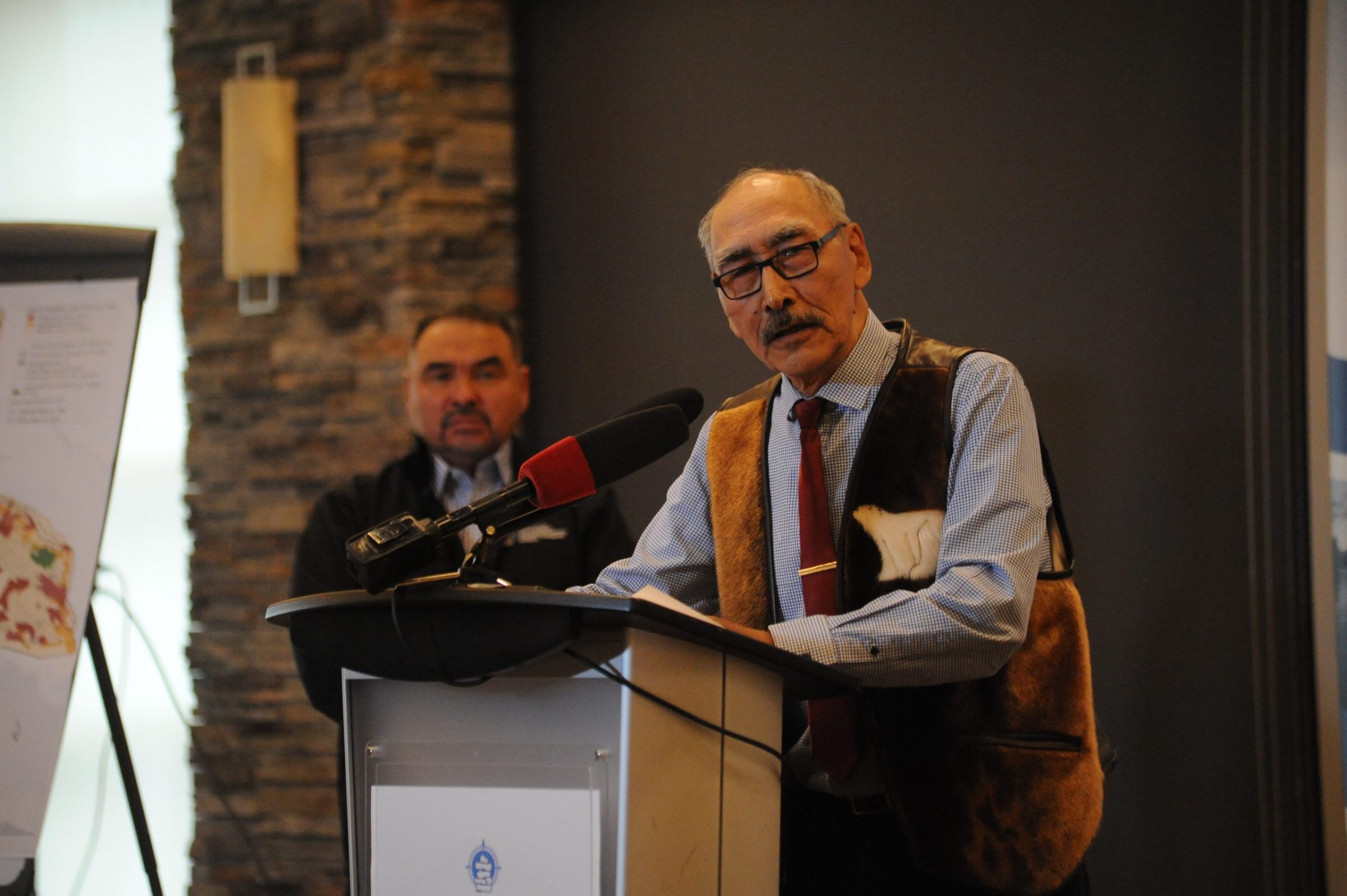Conservationists cheer latest proposal to protect land in Nunavut
Meanwhile mining groups say they worry it will dampen enthusiasm for investment in the territory.

The Nunavut Planning Commission’s new proposal for what parts of the territory should be protected from industrial activity is getting some early approval from World Wildlife Fund Canada.
That’s because the new draft of a land-use plan for the territory identifies more caribou and walrus calving areas and marks them as off limits year-round.
Specifically, the government uses Inuit traditional knowledge and a study from the Qikiqtaaluk Wildlife Board to mark calving grounds on Baffin Island, and these areas would be protected for the first time.
WWF-Canada applauds this move as a “signal that caribou calving grounds are off limits to development,” said its Arctic species and ecosystem specialist, Brandon Laforest.
In 2016, WWF-Canada mapped out the territory’s mineral rich-areas and its caribou calving grounds and found that if all caribou calving grounds identified were protected, there would be 10 percent of overlap.
“It’s a necessary sacrifice to protect caribou calving grounds,” Laforest said.
The Nunavut Planning Commission was established as part of the 1993 Nunavut Agreement that created the territory.
The commission’s mandate is to map out rules for land use and wildlife conservation across Nunavut. This is its fourth try over the past 10 years at coming up with an overarching plan for the territory that will satisfy Inuit organizations, the federal government and Nunavut government.
The most recent proposal, released in 2016, was criticized by Inuit organizations and the mining industry for protecting too much land.
The most recent plan lays out 100 pages of proposed measures to protect a larger percentage of the Nunavut Settlement Area — 22 percent — but introduces a more lenient system for exempting existing mining projects from the plan.
Under this plan, the mining industry would know which areas of Nunavut are completely off limits — as determined through community consultations — and which ones are open for business.
This is a step in the right direction, said Laforest.
“Every day that we don’t have a Nunavut management plan is another day when the large, vast majority of the territory is completely open to staking and claiming of mineral rights,” he said.
Laforest also pointed to parts of the plan he’s concerned about, such as exemptions for companies with existing mineral claims.
Tom Hoefer, executive director of the Northwest Territories and Nunavut Chamber of Mines, said the Canadian mining industry has changed a lot since 2016.
“Nunavut exploration has experienced a significant decline,” he said, citing a chart published by Natural Resources Canada that shows a nearly 10 percent drop in Nunavut’s share of Canadian mineral exploration to 3 percent in 2021.
Last year, the Fraser Institute, a conservative-leaning think tank, ranked Canada as the second most attractive region in the world for mining investment. Yet Nunavut ranked 39 — much lower than its rank of 15 only two years prior.
Hoefer said the chamber is still reviewing the draft plan, and understanding its potential implications will take some time. In the meantime, he is concerned that investors are taking their money elsewhere.
“As the land-use plan controls land access, and land access controls where, and if, exploration can be conducted, we have a strong interest in seeing what effects the [draft plan] might have on mineral resource development,” he said.
Nunavut Tunngavik Inc. will be reviewing the plan over the next few months as well, focusing on whether it protects access to country food, safe drinking water and increases economic opportunities, according to a statement from CEO Kilikvak Karen Kabloona.
The commission plans to hold public hearings in the Kivalliq and Kitikmeot regions in November and possibly Pond Inlet and Iqaluit early in 2022, if funding allows.
After that, the commission may make changes to the draft plan, depending on feedback, before asking for approval from the federal and Nunavut governments and NTI.